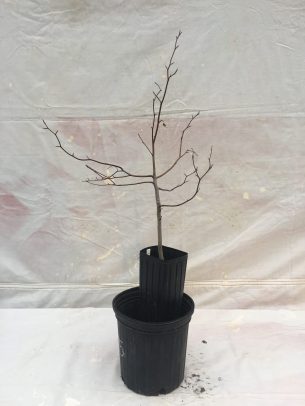Research trees to become Bonsai works of art
Among the hustle and bustle at the intersection of Halsted and Taylor streets sits the UIC Plant Research Laboratory.
While most Chicagoans forget about plants during the bitter winter season, Matthew Frazel, greenhouse manager and skilled horticulturalist, is dedicated to their survival. The UIC Plant Research Laboratory’s greenhouse houses plants that are used for experimentation, such as biological sciences professor Hormoz BassiriRad’s seedlings, which are used for research in high carbon dioxide environments.
BassiriRad begins his experiments with more seedlings than he needs to prepare for the uncertainty of survival rates. While some surplus plants are picked up by UIC community members and others are planted on the greenhouse grounds, the rest are disposed of.
A batch of 20 Beech seedlings that did not make the cut for BassiriRad’s research grabbed Frazel’s attention, and he was determined to preserve them.
“When I looked at these trees I saw that they had a lot of character to them,” Frazel said. “I knew they were real beauties.”
Frazel previously worked at the Chicago Botanic Garden and sent pictures of the plants to his former colleague, Chris Baker. Frazel suspected that the Chicago Botanic Garden would be interested in the trees for their Bonsai collection. Bonsai is an ancient Japanese horticultural art, which essentially miniaturizes a tree over a long period of time by pruning and directing the growth of the tree.
Baker expressed his interest in the trees to create a miniaturized woodland planting.
“The trees are interesting to me for a few reasons,” said Chris Baker, a curator of Bonsai at the Chicago Botanic Garden. “I like the species [Beech] and its characteristic light gray bark when mature. This species also responds well to the techniques we use to create Bonsai, such as root pruning, foliage pruning and adapts well to container life. Due to the young age of the trees and differentiation in trunk size, they are great candidates for forest planting.”
The unlikely pairing of research trees and the ancient art of Bonsai can ultimately be credited to Frazel’s initiative and understanding of their potential. The collaborative effort between the UIC Plant Research Laboratory Greenhouse and the Chicago Botanic Garden illustrates a bigger picture working across organizations to create art that has the capacity to persist across generations.
“I don’t see any better use for these extra plants than transforming them into Bonsai specimen,” BassiriRad said. “Personally, I love Bonsai plants as they represent to me the intersection of art, nature and architecture. I am extremely happy that [Chicago Botanic Garden] is able to put our surplus tree seedlings to good use.”
Categories

